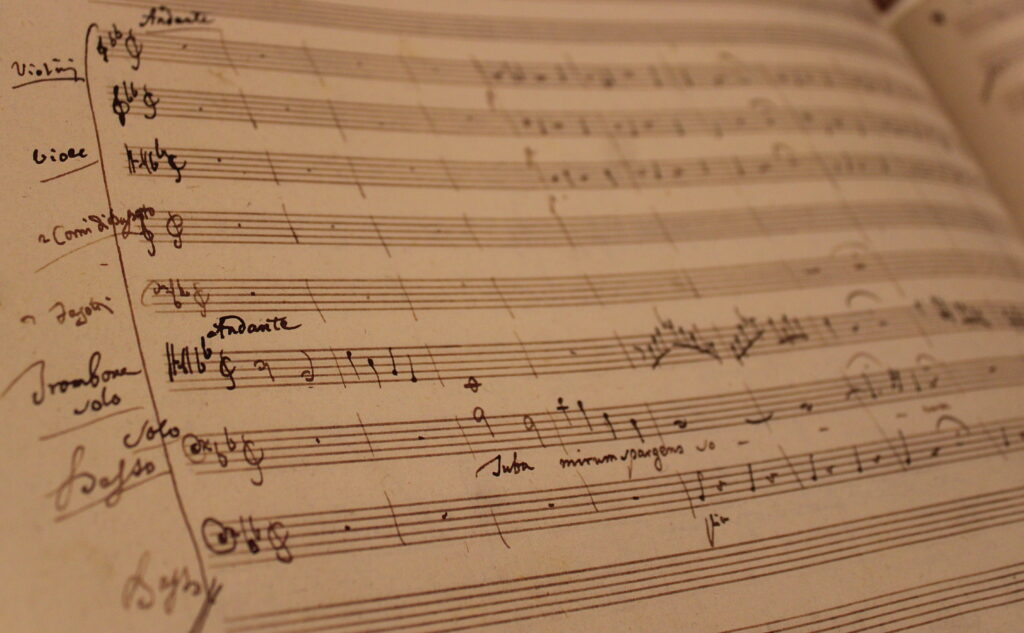Music is often described as sound arranged into order. It tells us a story and takes us on a journey. It has a beginning, middle and an end. Even a free-form expressive improvisation has these innate characteristics even if it is not consciously intended. Music is held together by its structure; if a piece was corporeal, the structure would be the skeleton onto which melodies and harmonies are attached to ‘flesh it out’. Without structure we have ideas occurring one after another with no sense of direction or purpose, or a collection of muscles and nerves with nothing to hold them in place.
Picture yourself sitting at a piano or strumming a guitar, exploring chords and scales with the aim of writing a piece of music. After a while you are inspired by your playing and quickly record it using your phone so you don’t forget it. With time, this process repeats, yielding a cycle of unfinished ideas and recordings. The art of building a finished piece with a defined structure seems to me a different process to coming up with ideas. One that involves writing things down on paper, or seeing it represented visually on a Digital Audio Workstation. A process that suggests a similar definition of the word ‘composing’: to make up a whole from parts. Compiling ideas into a finished product is a composer’s skill that is essential and requires practice and understanding of form. The extensive catalogue of the prolific Wolfgang Mozart shows us that he must have had a well-refined method for this aspect of music writing. In his words, “I must finish [writing this letter] now, because I’ve got to write at breakneck speed—everything’s composed—but not written yet.”
Centuries ago, before microphones had been invented, even an improvised piece, or fantasia, necessitated transcription onto manuscript paper for preservation. This process often entailed slight alterations from the original performance for the sake of cohesion and refinement. Many famous fantasias have a structure to them, even if they are not as rigid as other pieces. The sketchbook of Mozart’s earliest pieces show his developing skill in the handwritten art of composition. Even in these formative works, Mozart demonstrated meticulous attention to melody, harmony and other intricacies, all the while considering the broader structure of each composition. It is this comprehensive approach to composition that contributes to Mozart’s reputation as a genius; he didn’t merely focus on individual details but attended to every level of the piece, from the smallest nuances to its overarching entirety, while infusing it with his unique personality and zeitgeist.
Despite historical traditions emphasising structured compositions, various musical movements have since emerged that diverge from such strict forms. Debussy, for instance, famously remarked, “I am more and more convinced that music is not, in essence, a thing that can be cast into a traditional and fixed form. It is made up of colours and rhythms.” This sentiment challenges conventional notions of musical structure, advocating for a more fluid and expressive approach as reflected in the artistic movement of impressionism.
Contemporary experimental music further pushes the boundaries of traditional structure, exploring every aspect of sound, often at the expense of accumulated musical wisdom. However, even in these avant-garde compositions, the fundamental concept of a beginning, middle, and end remains inherent due to the linear nature of time. John Cage’s ‘As Slow As Possible,’ a piece begun in 2001 and set to conclude in 2640, shows us that even the most unconventional compositions must follow this basic structure. Pop music songwriters use a structure constituting combinations of familiar sections: intro, verse, pre-chorus, chorus, middle 8 and outro. However, crafting instrumental music that maintains coherence poses a unique challenge.
To the casual listener, even the instrumental music of Mozart and Bach may seem spiritually inspired, as if bestowed upon them from above. But did these composers perceive their craft in the same way? Bach, known for his religious dedications, attributed his musical achievements not to divine intervention but to diligent study and hard work: “What I have achieved by industry and practice, anyone else with tolerable natural gift and ability can also achieve.” Similarly, Mozart rejected the notion of effortless creation, stating, “It is a mistake to think that the practice of my art has become easy to me […] no one has given so much care to the study of composition as I. There is scarcely a famous master in music whose works I have not frequently and diligently studied.” Both composers were acutely aware of their contemporaries’ works and those that preceded them. They immersed themselves in the study of others’ compositions to hone their own craft, understanding the intricate structures of music intimately.
The perception of music as a divine gift is often propagated by admirers rather than the composers themselves. Mozart and Bach’s mastery lay not in mysticism but in their deep understanding of musical theory and rigorous practice. They were akin to magicians, enchanting audiences with their compositions while concealing the meticulous craftsmanship behind the illusion.
Even within lengthy compositions, master composers employ consistent structural elements to enhance and support their music. Take, for example, Mozart’s concertos, each featuring a cadenza before the concluding section. Here, the soloist is tasked with performing an improvised solo using thematic material from the concerto. Often indicated in the score with nothing more than a fermata symbol, these cadenzas pose a question to performers: what to play? Of Mozart’s 27 piano concertos, only 15 have cadenzas written out by the composer. Studying these can demystify the process as we can see that there is method to how Mozart wrote and improvised his cadenzas; it is not just conjured from thin air.
Let us briefly analyse the cadenza. The beginning is announced by the cadential 6/4 chord. This is the tonic chord with the 5th in the bass. It is the antepenultimate chord of the cadence; the third from last. From here one has to improvise using ideas from earlier in the composition to lead us to the penultimate chord, which is the dominant chord. Often an extended trill from the soloist signals to the orchestra that the cadenza is almost finished and the finale of the concerto can commence with the return of the orchestra for final chord of the cadence, most commonly the tonic chord.
The cadenza makes up only a small section of one of the movements in the full composition. There are many levels of ideas within ideas within ideas. Think of Beethoven’s fifth symphony – the entire movement is built from a motive consisting of 4 notes, stretched, compressed, turned upside down, backwards, halved and doubled.
In the vast landscape of music, spanning centuries and continents, myriad forms exist, ranging from the familiar binary form to the more complex fugue. To keep it simple we can draw parallels to poetry. Consider the ABACA format, where each letter represents a musical section – this form repeatedly returns to the first section after each other section. Called ritornello in Renaissance and Baroque eras, later known as rondo in the classical. Embracing such structures offers a framework for ideas, allowing for the return of earlier motifs at pleasing intervals and weaving a logical narrative that leads to a more satisfying outcome for the listener.
Adopting a predetermined form can greatly ease the daunting task of composing a piece of music. Just as one consults a recipe and gathers ingredients before cooking a meal, selecting a musical form before starting can provide direction and coherence to the creative process. What would be left of recorded music without the 12-bar blues form? It serves as the foundation for the majority of blues songs. Just as one consults a recipe and gathers ingredients before cooking a meal, selecting a musical form before starting provides direction and coherence to the creative process and lets you know when it is ‘cooked’.
Let’s explore an example of from classical music: theme and variation. Here, a popular melody is played and then repetitions are subjected to transformation, exploring different styles and techniques. Knowing this we can choose a theme and from this starting point explore different styles for the variations. Looking at examples of similar compositions from classical music we can even get inspiration of how to create the variations. For example, if you know that a composer has a theme in a major key, then a variation in the parallel minor key, you could do the same for your piece. It’s important to recognise that borrowing from predecessors is not plagiarism; rather, it’s a hallmark of artistic evolution. Just as Michelangelo didn’t invent Renaissance-style oil painting or marble sculpture and Ella Fitzgerald didn’t originate jazz or scat singing, artists build upon existing ideas to forge their own masterpieces, enriching the cultural tapestry with each iteration.
And now we return to you sitting with an instrument, this time with a theme and variation or a 12 bar blues structure in your mind. The hard work has already been done, you just have to fill in the blanks.


Leave A Comment